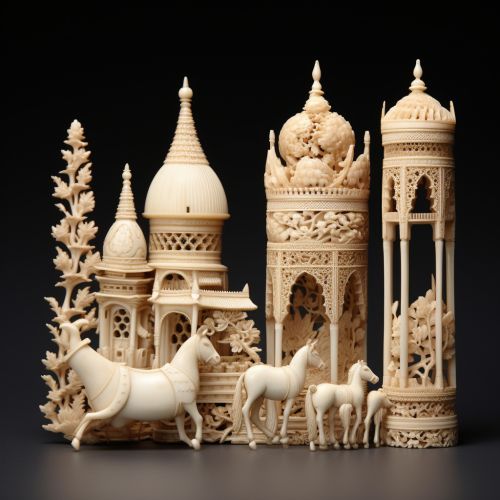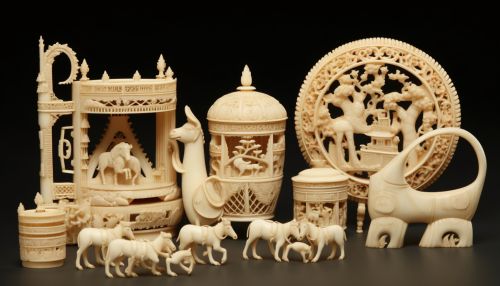Ivory trade
History
The ivory trade has a long and complex history that dates back to prehistoric times. Archaeological evidence suggests that ivory, derived from the tusks of large mammals like elephants and walruses, was traded across vast distances even in the prehistoric era. The allure of ivory, with its smooth texture and ability to be carved into intricate shapes, made it a highly prized commodity.


In the ancient world, ivory was used for a variety of purposes, from decorative items to practical tools. The Ancient Egyptians used ivory for making statues and furniture, while in Ancient Rome, it was used for making combs and other personal items. The Ancient Greeks used ivory to create sculptures and inlays for furniture.
Trade Routes
Throughout history, the ivory trade has been facilitated by a network of trade routes that spanned across continents. In Africa, the Trans-Saharan trade routes were used to transport ivory from the interior of the continent to the Mediterranean coast. From there, it was shipped to Europe and the Middle East. In Asia, the Silk Road served as a major conduit for the ivory trade, connecting China with the Middle East and Europe.
Impact on Species
The demand for ivory has had a devastating impact on species that are hunted for their tusks. Elephants, in particular, have been severely affected by the ivory trade. It is estimated that the African elephant population has declined from several million at the turn of the 20th century to less than 500,000 today. The Asian elephant population has also been decimated, with less than 50,000 individuals remaining in the wild.
Regulation and Bans
In response to the declining elephant populations, several measures have been taken to regulate the ivory trade. The Convention on International Trade in Endangered Species of Wild Fauna and Flora (CITES) was established in 1973 to regulate the international trade in wildlife and wildlife products, including ivory. In 1989, CITES enacted a worldwide ban on the international trade in elephant ivory.
Illegal Trade
Despite the international ban, illegal trade in ivory continues to be a major problem. It is estimated that tens of thousands of elephants are killed each year for their ivory. The illegal ivory trade is driven by demand from markets where ivory is still highly valued, particularly in Asia.
Efforts to Combat Illegal Trade
Efforts to combat the illegal ivory trade have included increased law enforcement, public awareness campaigns, and initiatives to reduce demand for ivory. In recent years, several countries, including China, have implemented domestic bans on the ivory trade.
See Also
Elephant poaching Wildlife trafficking Conservation biology
